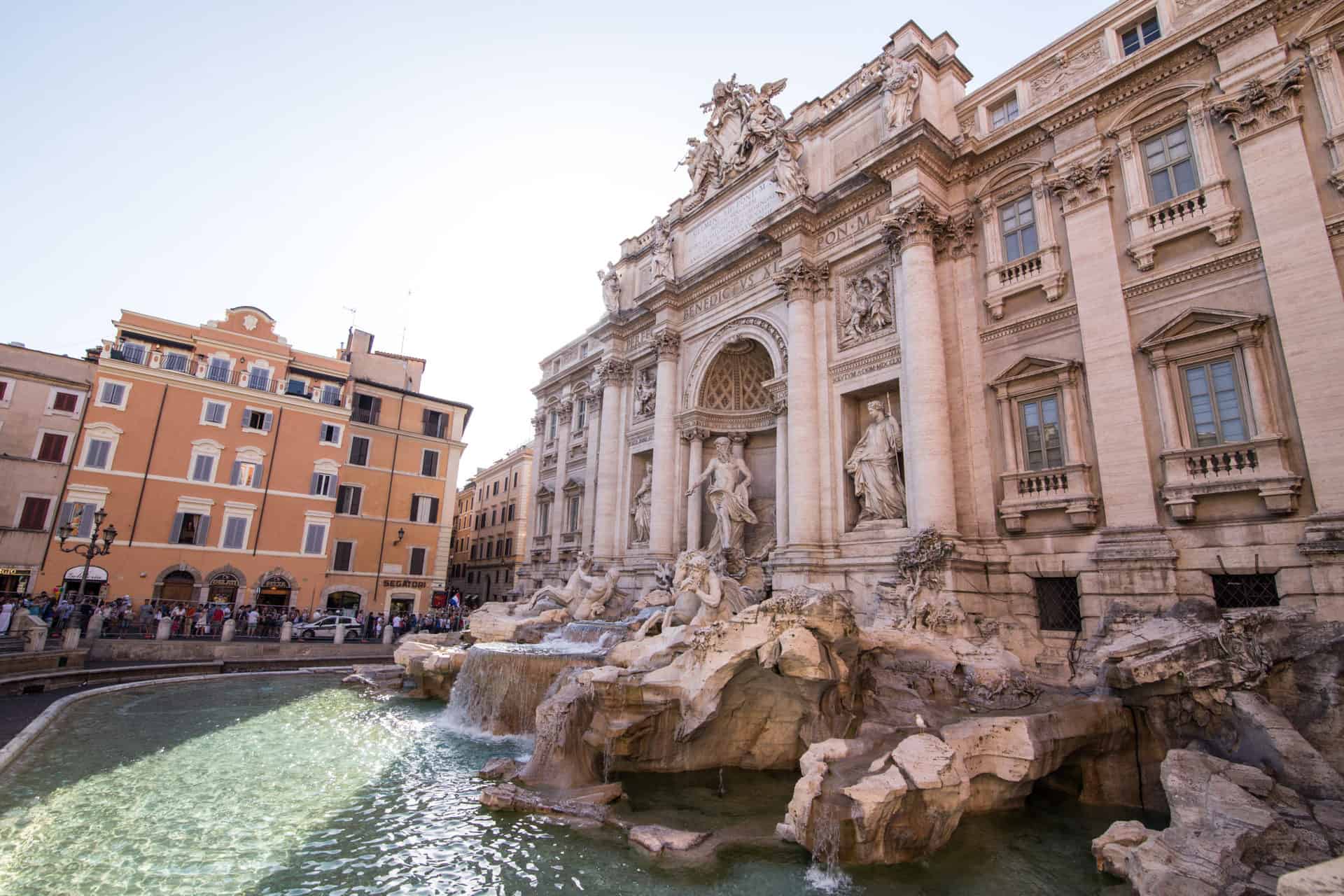Virtual Reality Travel: Explore World Heritage Sites Without Leaving Your Sofa

Updated On: April 20, 2024 by Yasmin Elwan
With the advent of virtual reality technology, the concept of travel has transcended physical boundaries, allowing us to visit the world’s greatest cultural sites from the comfort of our homes. Whether it’s marvelling at the fine brushwork of Renaissance paintings or standing at the base of ancient architectural feats, virtual reality travel provides an immersive experience that traditional guidebooks and documentaries simply cannot match.
By donning a VR headset, we’re transported instantly to destinations that might be financially or logistically out of reach, offering us a window into the rich tapestry of global heritage.

As we navigate the virtual globe, we explore not just the visual splendour of these locations but also their historical significance and cultural narratives. These digital experiences of historical and cultural sites allow us to gain deeper insights into the stories that have shaped humanity.
From high-definition virtual tours of prominent art museums and galleries to interactive exhibits, the digital realm is bringing the nuances of the world’s cultural fabric to a broader audience. Moreover, the educational opportunities inherent in virtual travel are vast, with the potential to enrich our understanding and appreciation of different cultures in a manner that is both engaging and accessible.
The Evolution of Virtual Reality Travel

Virtual reality travel has transformed the landscape of tourism, bringing the world’s cultural sites into homes far and wide. Through historical progress and technological innovation, travellers now immerse themselves in foreign lands without leaving the comfort of their homes.
Historical Milestones in VR
The conception of virtual reality dates back to the early 20th century, but it was not until the dawn of the digital age that the potential for virtual tours started taking shape. The development of the first VR headset in the 1960s marked a significant stride, setting the foundation for what would become modern virtual reality travel.
As technology progressed, the 1990s saw the rise of the first virtual travel experiences, though these were rudimentary by today’s standards. It was a pivotal moment when art, history, and culture began to be encapsulated in a digital format, allowing individuals to journey through time and space to explore historical sites from their living rooms.
Technological Advances in Virtual Travel
Recent years have witnessed remarkable advances in virtual reality tech. The hardware, led by sophisticated VR headsets, has evolved to offer highly detailed and immersive experiences, crafting realistic encounters with the world’s art and cultural heritage. Software development, coupled with high-speed internet, now allows for smooth and lifelike virtual tours.
This union of hardware and software is pivotal, facilitating travel enthusiasts’ exploration of distant lands and historic epochs with an unprecedented sense of presence. These leaps in technology mirror our transition from purely informational websites towards platforms like Connolly Cove, which invites users to delve deep into the essence of travel, culture, and history.
Navigating the Virtual Globe
Embracing cutting-edge technology, we can now explore the cultural treasures of the world from the comfort of our homes. Here’s how we’re revolutionising the way we traverse the planet’s most iconic sites.
Software Platforms and Apps
Our journey begins with the selection of suitable software platforms and apps. Google Earth’s VR feature allows us to soar above cities like New York or navigate the narrow lanes of Rome. For more curated experiences, platforms like Flyover Zone specialise in virtual tours of historical and archaeological sites, bringing ancient civilisations right before our eyes.
Navigating Virtual Spaces
Once inside these virtual realms, navigating virtual spaces is intuitive. With VR controllers or simple clicks and swipes, we can traverse exhibitions in Paris’ Louvre or wander through the halls of the British Museum in London. Some apps offer guided tours with audio commentary, adding context and depth to our exploration.
Personalised Virtual Itineraries
Lastly, personalised virtual itineraries help tailor experiences to our preferences. Perhaps we’re intrigued by the vibrant culture of Brazil or the genteel ambience of an art gallery in Amsterdam. By setting our interests, we can receive recommendations that take us to these destinations and beyond, moulding our virtual adventure to our individual tastes.
Top Virtual Tours of Art Museums and Galleries
With technological advancements, some of the world’s most prestigious art museums and galleries have opened their doors virtually, allowing us to experience the wonder of cultural sites from the comfort of our homes. From the intricate brush strokes of Monet to the bold forms of contemporary art installations, online platforms now offer unprecedented access to iconic and modern works alike.
Virtual Exploration of Iconic Paintings
Many renowned art museums have made their collections available online. The British Museum offers a comprehensive virtual tour that includes the Rosetta Stone and Egyptian mummies. Similarly, The Louvre in Paris allows art lovers to view the venerable Mona Lisa and the grandeur of the museum’s architecture. For those enamoured with post-impressionism, the Van Gogh Museum provides a detailed view of the artist’s turbulent brushwork and vibrant colours.
Discovering Sculptures and Installations
Virtual tours are not limited to paintings. The National Gallery of Art in Washington, D.C., exhibits sculptures by artists such as Alexander Calder and Henry Moore. In addition, New York’s Museum of Modern Art (MoMA), a prominent institution for modern masterpieces, showcases captivating installations and sculptures, immersing viewers in three-dimensional art from afar.
Online Access to Contemporary Exhibits
For aficionados of the new and the now, contemporary art exhibits around the world can be toured virtually as well. The Musée d’Orsay is a treasure trove of artworks by Cézanne and other preeminent modern artists. Those looking to experience the intersection of art and American fashion might be intrigued by MoMA’s online exhibits, which often feature both the beautiful and the provocative sides of contemporary culture.
The Digital Experience of Historical & Cultural Sites
As we explore cultural heritage sites from the comfort of our homes, virtual reality offers an unprecedented digital experience, allowing us to visit places we’ve only read about in history books. From the ancient ruins of Machu Picchu to the majestic Great Wall of China, VR technology can transport us across continents and eras without stepping outside.
Touring Ancient Ruins and Monuments
Through virtual reality, we can now stand amid the towering stones of Easter Island or walk the storied pathways of the Colosseum in Rome. Imagine admiring the intricate work on the Ishtar Gate of Babylon at the Pergamon Museum, all from the comfort of your sofa. Virtual tours of these sites offer detailed views that might be challenging to experience in person, such as a close-up look at the carvings on the ancient ruins or a bird’s-eye view of sprawling sites like the Great Wall of China.
Exploring Cultural Heritage Sites Online
The online exploration of cultural sites does not end at ancient ruins. Curations of cultural significance, such as Egyptian mummies or the stunning frescoes of the Sistine Chapel inside the Vatican, are available through virtual walkthroughs. Enthusiasts can view artefacts and artworks in extraordinary detail, appreciating subtleties often missed during a traditional visit.
Educational content provided alongside these digital experiences enhances our understanding of these wonders, whether it’s learning about the history behind the Christ the Redeemer statue in Brazil or the architectural marvel that is the Ishtar Gate.
Virtual Voyages to Natural Wonders
With the advent of virtual reality technology, experiencing the grandeur of Earth’s natural beauty has never been more accessible. We can traverse breathtaking landscapes and delve into the rich biodiversity from the comfort of our homes.
National Parks and Preserves
National Parks like Yellowstone and Yosemite have become more approachable through virtual tours. When peering into Yosemite National Park, one can marvel at the iconic Half Dome and the cascading Yosemite Falls from multiple vantage points. Similarly, the geological wonders of Yellowstone National Park, with its spouting geysers and multicoloured thermal pools, are open for exploration through our screens.
In Alaska, the Kenai Fjords reveal their icy beauty, showcasing glaciers and maritime habitats. Bryce Canyon’s distinctive hoodoos, steeped in natural history, stand as natural amphitheatres, while the awe-inspiring Grand Canyon unfolds layer by colourful layer in a virtual descent kilometres deep into geological time.
Navigate through the subterranean marvel of Carlsbad Caverns, with its stunning cave formations, or visit the remote Dry Tortugas to uncover the mysteries of its coral reefs and marine life, all without having to travel miles or leave a carbon footprint.
Oceans and Marine Life
The virtual realm also invites you on an odyssey across the world’s oceans. One can witness the vibrant marine life that abounds within coral reefs or embark on virtual dives to explore underwater ecosystems teeming with biodiversity.
Observing the marine sanctuaries through your VR headset, you will encounter everything from the smallest clownfish darting amongst anemones to the majestic whales traversing oceanic expanses. This digital journey under the sea serves not only as a visual spectacle but also as an educational opportunity, fostering a greater appreciation for marine conservation.
Virtual travel provides an unparalleled opportunity to experience these treasured ecosystems, emphasising their need for preservation—allowing us to become advocates for these wonders from our own living spaces.
Interacting with Virtual Reality Exhibits
Virtual Reality (VR) technology has revolutionised the way we engage with cultural sites around the world. Through VR, we can immerse ourselves in interactive exhibits that combine learning and play in a dynamic digital environment.
Virtual Hands-on Activities
Thanks to VR, we’re able to interact with digital replicas of artefacts and historical relics without the need to physically travel. For instance, we can examine a detailed virtual representation of the Rosetta Stone just as we might in the British Museum. By simulating the tactile experience, these virtual hands-on activities allow us to gain a more profound appreciation for cultural treasures from our own homes.
Learning Through Interactive Content
Moreover, VR provides a platform for learning through interactive content, such as videos and photographs, that bring historical facts to life. We can journey through online exhibits of ancient civilisations, pausing and exploring at our own pace. We’re able to observe the nuances of a site, delve into the associated trivia, and wander through museums halfway across the globe, guided by rich visual and audio explanations.
The Influence of VR on Modern Travel Habits
Virtual reality technology has sparked a transformation in how we engage with travel, offering unique virtual tours of the world’s cultural sites from the comfort of our homes.
Shifts in Tourism Trends
The emergence of virtual reality (VR) has introduced new dimensions to the tourism industry, fostering innovative travel trends. No longer confined by physical constraints, travellers can now explore distant lands and renowned cultural sites without leaving their homes. This has led to a surge in virtual tours, allowing people to indulge in virtual adventures through historic ruins, museums, and cities thousands of miles away.
For instance, technology has enabled us to experience the famed corridors of the Louvre or the ancient ruins of Machu Picchu digitally. Significantly, VR has offered a solution for tourism during situations where traditional travel might be limited, as seen during the COVID-19 pandemic.
VR Travel and Environmental Impact
Virtual travel also stands out for its considerably reduced environmental footprint compared to traditional travel. In our pursuit of sustainable tourism, VR provides an accessible alternative that eliminates the emissions associated with air travel.
By embracing this technology, we contribute to the preservation of natural sites and reduce the problem of over-tourism. Technology like this not only aids in protecting our delicate ecosystems but also serves as an educational resource, drawing attention to the importance of environmental conservation.
Through virtual reality, we are redefining the parameters of travel and technology, crafting a future where cultural appreciation and environmental mindfulness go hand in hand.
Educational Opportunities in Virtual Travel
We harness virtual reality to transform how we learn about the world’s vast cultural heritage. Our homes become gateways, offering us the ability to virtually visit esteemed institutions and engage with history, art, and sciences in a way that has only recently become possible.
Virtual Field Trips for Students
With technology at our fingertips, we can offer students interactive virtual field trips. Pupils can step inside the Museum of Natural History from their classroom, exploring dinosaur exhibits and ancient artefacts. Virtual tours at NASA lead them beyond our atmosphere, offering a unique gaze at Mars and space exploration. Such trips enhance engagement and bring textbook pages to life, providing educational experiences that are immersive, accessible, and exciting.
Global Learning and Cultural Exchange
Our commitment to global learning bridges distances, allowing cultural exchange without the need for travel. Through virtual reality, we can immerse ourselves in the vibrant underwater scenes at the Georgia Aquarium or encounter the diverse species inhabiting the San Diego and Houston Zoos.
The National Museum of Anthropology opens its virtual doors for a deep dive into ancient civilisations. Art aficionados might stroll through the halls of the National Museum of Modern and Contemporary Art, Seoul, or the venerable corridors of the Vatican Museums, connecting with the essence of humanity’s artistic expressions. Each virtual tour serves as a conduit for cultural exchange, enriching our global understanding and fostering an appreciation of our shared heritage.
The Future of Virtual Reality in Tourism
Virtual reality is transforming the landscape of tourism, enabling us to explore the world’s cultural sites from the comfort of our homes. This section discusses the technological advancements that are reshaping travel experiences and the exciting prospects on the horizon for VR in tourism.
Emerging Technologies and Innovations
In the realm of tourism, innovative technologies are making significant strides. Virtual reality headsets, such as the Oculus Rift and HTC Vive, have advanced to the point where they offer incredibly lifelike experiences. These devices are now capable of delivering high-definition visuals and responsive tracking systems that can transport users to digital tours of cultural sites around the globe.
For instance, visitors can embark on a journey through the Sagano Bamboo Forest in Japan or stroll across the famed Roman Colosseum without leaving their living rooms.
The integration of haptic feedback technology is another leap forward, providing tactile sensations that mimic the feeling of different environments. This added layer of immersion can make virtual tours feel even more realistic. Moreover, technologies such as 360-degree video capture and interactive tour guides are enhancing virtual escapades, making them more engaging and informative.
Predictions for VR-Enhanced Experiences
Looking to the future, our predictions for VR in tourism include increasingly personalised and interactive experiences. With the rise of machine learning and AI, virtual tours will not only be passive but also adapt to the preferences and interests of the user. Imagine a VR headset that can curate a virtual tour of the Louvre, focusing on particular art periods based on your previous interactions.
Moreover, we foresee a time when VR will be seamlessly integrated with other emerging technologies like augmented reality (AR) and mixed reality (MR), offering a hybrid experience. These advancements will allow travellers to layer digital information onto physical spaces, bridging the gap between virtual and actual and enhancing educational aspects of travel.
Our evolving technology is set to revolutionise the field of travel and tourism, offering unique opportunities to explore and appreciate global cultures without the constraints of physical distance or the costs associated with travel.
VR travel isn’t just about fun vacations. Imagine exploring history, conquering fears, or connecting with faraway cultures – all from your living room. VR is changing how we learn, heal, and see the world. Buckle up because the future of travel is virtual!






